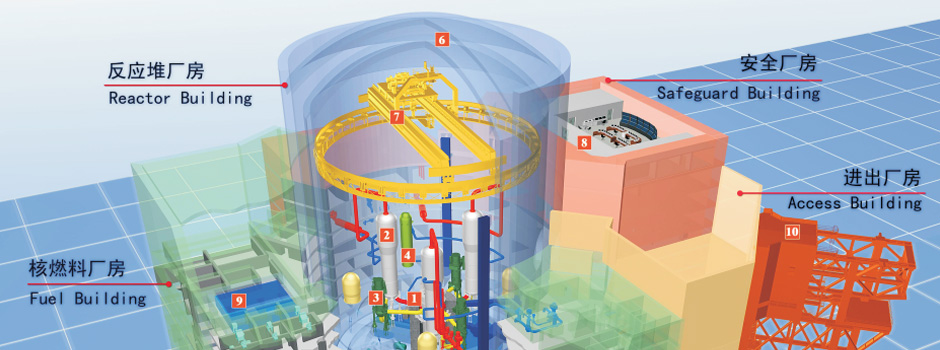I have blogged about China's ambitions to be a major exporter of nuclear reactors. They have an ambitious construction program for domestic nuclear reactors with twenty two currently under construction and they hope to sell their reactors to other countries.
The Hinkley Point C project in the UK that has been in the news lately is connected to Chinese nuclear ambitions. The Chinese have made a major investment in the UK project with the condition that they be allowed to construct one of their Hualong One reactors at another site in Britain. This Chinese reactor will be a demonstration model that can be shown to other countries that are interested in Chinese reactors. Unfortunately, the new UK government installed after the Brexit vote has suspended work on the project and may cancel it.
The Chinese developed the Hualong One design based on the design of Westinghouse AP1000 reactors with the assistance of Westinghouse. They have spent twenty years working with a number of foreign nuclear technology companies to develop their nuclear industry.
China has been successful in the past in using loans from state owned banks to help sell big construction projects to other countries. They is using this same system help sell their reactors. Currently, they are building a Hualong One reactor for Pakistan and have a contract to build one in Argentina. They are discussing a project in Romania.
Some nuclear analysts say that China is underestimating problems they will encounter in entering the international market for nuclear power reactors. They will face concerns about quality control in the manufacture of their reactors. Every country they are trying to sell to will have different laws and regulations that will affect any nuclear power project. With the low cost of natural gas and oil as well as the falling cost of wind and solar power, they will have to be very competitive to be successful. Given the complexity of nuclear power plants and the time consumed by licensing and construction, this will not be easy.
The Chinese are also facing serious backlash from their citizens over nuclear power facilities. Twice in recent years, the Chinese government has cancelled or delayed projects to construct a nuclear fuel reprocessing plant because of mass protests in the cities where the plants were to be built. Continued public rejection of such projects could hamper the expansion of the Chinese nuclear industry.
There has not yet been a major Chinese nuclear accident but there have been several close calls that we know about. The Chinese government is notorious for its secrecy about major industrial accidents and suppression of any public mention or discussion of such accidents. One big concern is the fact that the Chinese have changed some of the design parameters of the reactors that they have developed from foreign designs such as making a reactor bigger while keeping the cooling system that was designed for a smaller reactor.
In the international index of corruption in 175 nations, China ranks as the 83rd least corrupt country. Japan is 18th, the U.S. is 19th, and France is 23rd. That means that China is roughly four times as corrupt as three major exporters of nuclear technology. This is very troubling. It raises grave doubts about the ability of China to properly regulate the construction of nuclear power reactors to insure that they can be operated safely. Just one major accident at a Chinese power reactor inside or outside China could deal a serious blow to Chinese nuclear ambitions.
Artist's concept of the Hualong One:
